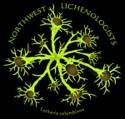Bruce McCune wrote:
Garry, you might check Bryobilimbia hypnorum or Mycobilimbia berengeriana. Not sure what to make of what you are calling cephalodia, since those would not be expected in these species. Perhaps they are freeliving cyanobacteria?
On p.344 of Vol.2 of the Microlichens of the PNW there is a multi-genus key to species like this growing on soil, detritus, and moss. Most of these species look rather like your photos.
I was thinking Micarea incrassata which does have cephalodia, but it has not been recorded in the Sonoran region. There were little black structures on the thalli and when I examined it more closely, I found Nostoc. However, I have examine the lichen again and there doesn't appear to be any other structures, of a similar type with Nostoc which makes be believe that it was free living
However, I will check out your suggestions, since I am now skeptical myself of it being Micarea.
Thanks for your help.

